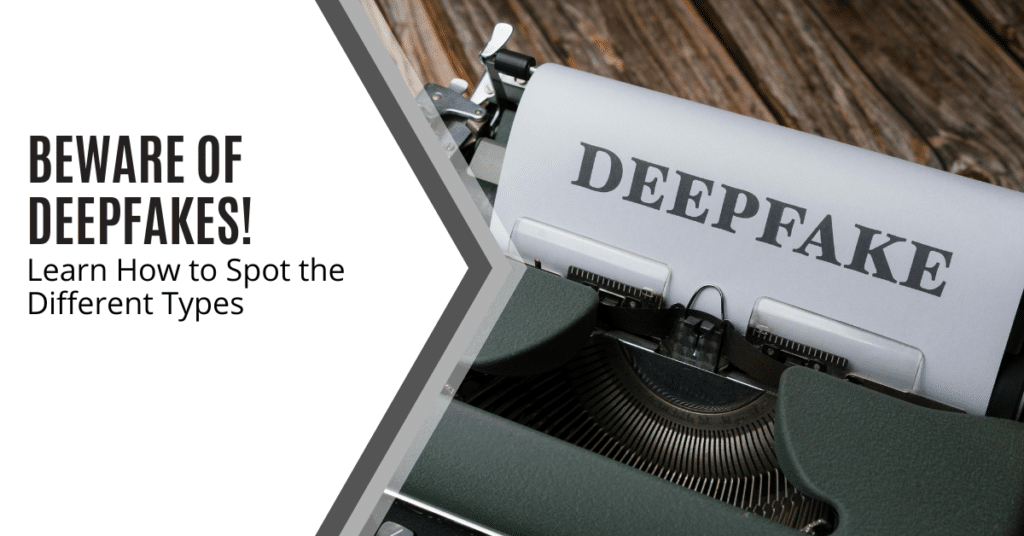|
Getting your Trinity Audio player ready...
|

Have you ever come across a video where a celebrity appears to say something shocking, only to later discover it was completely fake? Or perhaps you’ve received an urgent email that seemed to be from your boss, but something just didn’t seem right?
Welcome to the realm of deepfakes, a rapidly advancing technology that leverages artificial intelligence (AI) to create synthetic media, often in the form of videos or audio recordings. These creations can look and sound real but are actually manipulated.
While deepfakes can be used for creative endeavors like satire or entertainment, their potential for harm is worrisome. For instance, deepfakes have infiltrated political campaigns. In 2024, a fake robocall impersonated a candidate’s voice, aiming to deceive people into believing they said something they didn’t.
Malicious actors can use deepfakes to spread false information, ruin reputations, or even manipulate financial markets. They’re also employed in phishing attacks. Therefore, understanding the various types of deepfakes and knowing how to identify them is essential in today’s digital landscape.
What Are the Different Types of Deepfakes and How Can You Detect Them?
Face-Swapping Deepfakes
This is the most prevalent form of deepfake. It involves seamlessly placing one person’s face onto another’s body in a video. These can be highly convincing, especially when high-quality footage and advanced AI are used.
How to Spot Them:
- Inconsistencies: Examine the lighting, skin tones, and facial expressions. Are they consistent and natural throughout the video? Watch for subtle glitches, such as unrealistic hair movement or slight misalignments around the face and neck.
- Source Verification: Consider where you found the video. Was it from a reputable news outlet or an unknown social media page? Be cautious with unverified sources.
- Voice Analysis: Does the voice sound natural and match the person’s usual speech patterns? Inconsistencies in tone, pitch, or accent can be red flags.
Deepfake Audio
This type involves creating synthetic voice recordings that imitate a specific person’s speech patterns and intonations. Scammers can use these to produce fake audio messages, making it seem like someone said something they didn’t.
How to Spot Them:
- Audio Quality: Deepfake audio may sound slightly robotic or unnatural, particularly when compared to genuine recordings. Listen for odd pauses, inconsistent pronunciation, or unusual emphasis.
- Content Verification: Does the message content align with what the person would typically say or fit within the given context? If it seems out of character, it might be fake.
- Independent Verification: Look for independent evidence to support the claims made in the audio.
Text-Based Deepfakes
This emerging form of deepfake uses AI to generate written content, such as social media posts, articles, or emails, mimicking the writing style of a specific person or publication. These can be particularly dangerous as they can spread misinformation or impersonate someone online.
How to Spot Them:
- Critical Reading: Assess the writing style, vocabulary, and tone. Does it match the usual way the person or publication writes? Look out for unusual phrasing, grammatical errors, or inconsistencies.
- Fact-Checking: Verify the information against reliable sources. Don’t rely solely on the content itself.
- Emotional Triggers: Be wary of content that elicits strong emotions like fear, anger, or outrage, as these can be tactics to manipulate your judgment.
Deepfake Videos with Object Manipulation
This type extends beyond faces and voices, using AI to alter objects within real video footage, changing their appearance or behavior. This can be used to fabricate events or modify visual evidence.
How to Spot Them:
- Physics and Movement: Observe how objects move in the video. Do they behave naturally according to the laws of physics? Look for unnatural movement, sudden changes in object size, or inconsistent lighting and shadows.
- Original Footage: If possible, find the original source of the footage to compare and identify alterations.
Staying vigilant and thinking critically are crucial in the age of deepfakes. By familiarizing yourself with the different types, recognizing potential red flags, and verifying information through reliable sources, you can protect yourself from misinformation and manipulation.
Get a Device Security Checkup
Criminals may use deepfakes in phishing attempts, and clicking on them could lead to downloading a virus. A device security checkup can provide peace of mind by identifying and removing potential threats. Contact us today to learn more.
Twintel has grown into an expansive, full team of IT services professionals, acting as the outsourced IT department of non-profits, small to mid-size businesses, and enterprise-level corporations in Orange County, across California, and nationally.
Today, it’s the strength and deep expertise of the Twintel team that drives positive outcomes for clients. Each of the support staff, technicians, and engineers works diligently each day to make sure that the companies served have the seamless, secure, and stable IT environments needed to allow them to pursue their organizational objectives.